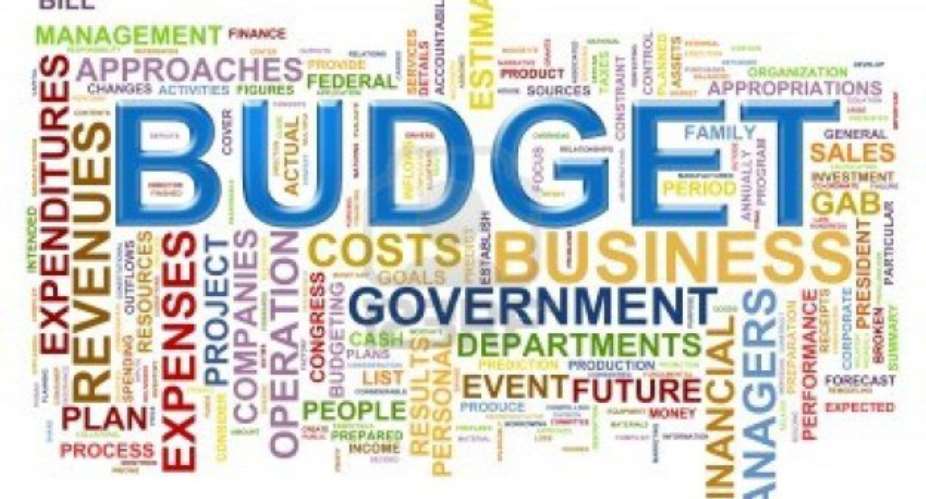The solution of the NPP's government to a seeming declining agricultural sector in the #Budget2017 is to modernize the sector and to improve productivity. Measures outlined, inter alia include: Provision of improved seeds; supply of fertilizers; provision of dedicated extension services; marketing and E-agriculture; and monitoring.
Concerns: The measures indicated how much fertilizer will be supplied to achieve this objective, 180,000 metric tonnes for the year. It also indicated it will import improved seeds to augment the program. However,
1. One question here is why import improved seeds to augment? Improved and certified seeds could be obtained from MoFA, our universities and other research institutions like the CSIR.
2. No specifics were provided as to how much of these seeds will be supplied? How many Agricultural Extension Agents (AEAs) will be trained, recruited or deployed to various stations across the country for this program?
3. How are the goods in question going to be marketed, by which means, is it that government itself will deploy buyers at farm gate to buy these goods? Are the produce going to be sold processed or in raw form?
4. Any plans in place to arrest postharvest losses, which is one major challenge for farmers, especially those producing cereals? And what of packaging?
5. In terms of monitoring, how is it going to be done/achieved? How is progress going to be measured and evaluated?
6. Most importantly, the budget did not indicate how much it will cost to achieve each of these objectives. No detail information and specifics were shared on this.
7. The budget also did not provide specific timelines to achieve each of these objectives.
Main Focus: Planting for Food and Jobs Program.
This is to encourage all citizens (both urban and rural) to take up farming as a full or part-time activity. It is intended to structure it along the lines of the erstwhile “Operation Feed Yourself”(OFY) programme in the 1970s under Acheampong's regime. The program is envisaged to provide jobs to about 750,000 people.
This is laudable initiative. This program will ensure all year food production, improve food security, curb food shortage, provide jobs, improve family income, improve livelihoods, ensures judicious use of land resources, etc. This program is similar to that used in urban agriculture. Countries such as Cuba, for example, successfully used Urban Agriculture as a means to evade food shortages (See Murphy, 2004), while many developing countries have long been farming within cities and towns for income and subsistence (See Nugent, 2001). Strong institutional efforts and technical assistance will be needed to achieve this.
Concerns:
1. Cost details were not provided.
2. How did they arrive at conclusion of 750,000 jobs?
3. The other projection of 30 percent from current production levels, rice by 49 %, soybean by 25 % and sorghum by 28 %.
4. How did these projections come about when there were no mention of the costs involved?
5. No investments plans made for the livestock sector?
6. Irrigation facilities and investments to increase acreage of farmlands?
7. No allocation made for climate smart agriculture initiatives and investments to boost production for farmers especially in the face of climate change?
8. Access to credits by farmers? This is a major issue facing farmers.
9. How much allocation made for research initiatives towards achieving these objectives?
Email: Sirakem34@yahoo





 Whoever participated in the plunder of the state must be held accountable – Jane...
Whoever participated in the plunder of the state must be held accountable – Jane...
 A vote for John and Jane is a vote to pull Ghana from the precipice of destructi...
A vote for John and Jane is a vote to pull Ghana from the precipice of destructi...
 I’ll repay your abiding confidence with loyalty, understanding and a devotion to...
I’ll repay your abiding confidence with loyalty, understanding and a devotion to...
 ‘I’ve learnt deeply useful lessons for the future' — Serwaa Amihere breaks silen...
‘I’ve learnt deeply useful lessons for the future' — Serwaa Amihere breaks silen...
 I’m sorry for the embarrassment – Serwaa Amihere apologises for leaked sex video
I’m sorry for the embarrassment – Serwaa Amihere apologises for leaked sex video
 Dumsor: Matthew Opoku Prempeh not in charge of Energy sector – Minority
Dumsor: Matthew Opoku Prempeh not in charge of Energy sector – Minority
 Adu Boahen’s murder: Police arrest house help who was in possession of deceased’...
Adu Boahen’s murder: Police arrest house help who was in possession of deceased’...
 Akufo-Addo nominates Felicia Attipoe as Tema West MCE
Akufo-Addo nominates Felicia Attipoe as Tema West MCE
 Election 2024: I can't have someone I defeated twice as my successor – Akufo-Add...
Election 2024: I can't have someone I defeated twice as my successor – Akufo-Add...
